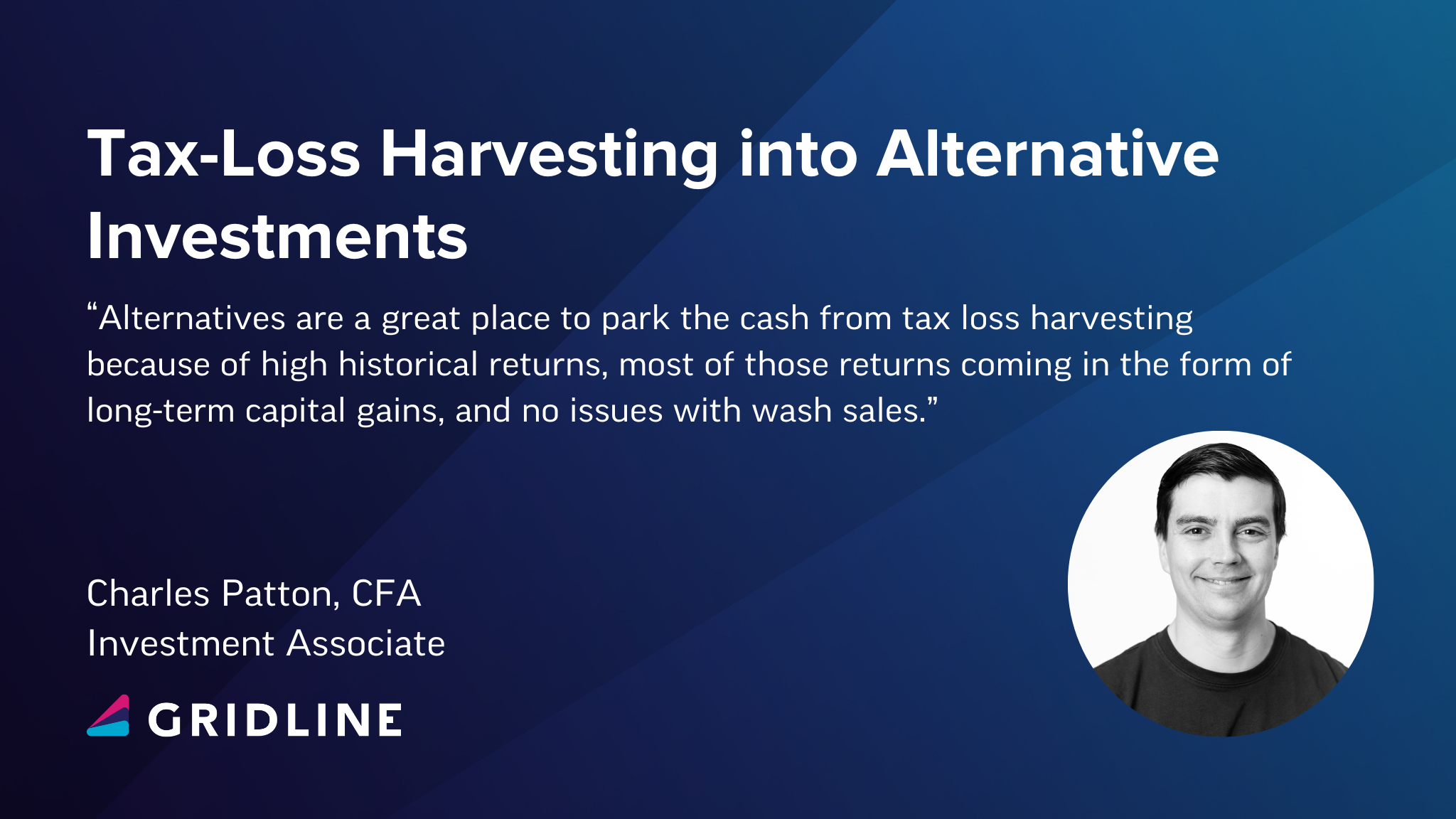It’s the most wonderful time of the year. Lights are going up around town, kids are eagerly anticipating a break from the scholastic grind, and savvy investors are considering how to position their portfolios for maximum after-tax gains in the years to come. One popular strategy that has traditionally paired well with the festive season is tax-loss harvesting.
Tax-loss harvesting begins with an investor considering their likely tax bill for the year and noticing a higher number than they would like to see, perhaps from selling a big stock winner or business. Rather than foot a hefty tax bill today, investors can sell an investment that has declined in value and use the realized loss to reduce their taxes. This not only eases the temporary burden, but Vanguard estimates that it can improve after-tax returns by above 1% annually, with the largest benefits accruing to the largest taxpayers with net worths above $1.2MM.
To understand why that might be the case, consider an investor, Bob, who makes a $100 investment in a stock that declines in value to $80 over a year (a 20% loss) and subsequently doubles in value to $160 (a 100% gain) before he needs to sell it to retire. Were he to hold that investment to retirement, he would take home $148 net of an assumed 20% capital gains tax rate. If, instead, Bob sells the investment at a 20% loss in the first year, he can use that loss to offset ordinary income or other short-term gains taxed at an assumed 30% tax rate, saving $6 in taxes ($20*30%). If he then reinvests the $80 of proceeds and the $6 tax savings back into a similar investment, that investment could grow to $172 ($86*2) by Bob’s retirement. Even after paying taxes on his gains, Bob walks away with $154.80, or $6.80 more than he would have had holding the investment all the way to maturity. $2 of that is from the lower assumed tax rate, and $4.80 is from Bob’s ability to compound capital for a longer stretch of time before paying any taxes.
There are a couple of simplifications to Bob’s example for investors to consider. First, the difference in Bob’s tax rates between year one and retirement was 10%, which assumed that Bob had short-term capital gains or standard income to offset short-term capital losses. Standard income can only be offset to a maximum of $3,000 annually, though some losses can be rolled. Investors should consult tax professionals to understand the specifics of their situation. Additionally, Bob’s savings rely on the underlying asset’s volatility. Repeating the same exercise with a year-one value of $90 and an exit value of $130 yields only $3.07 of savings. Finally, if Bob sells shares in a stock and purchases shares in the same stock, he will run afoul of IRS rules around “wash sales” and lose his ability to deduct losses from his taxes. Wash sale rules prohibit investors from buying securities that are the same or substantially identical within 30 days of selling below cost, so for Bob to operate within the rules, he would need to either wait for over a month to reinvest and risk prices moving away from him, or invest in a substantially different security with potentially different returns. Investors should consult legal counsel for more specifics.
What does tax-loss harvesting have to do with alternative investments? Alternatives are a great place to park the cash from tax-loss harvesting because of high historic returns, most of those returns coming in the form of long-term capital gains, and no issues with wash sales. Data provider Hamilton Lane looked at 10-year rolling returns from Private Equity and public markets side-by-side and found Private Equity outperformed all three public benchmarks in all but a handful of quarters since 2001. On the private equity side, most of those returns have come from long-term capital gains because investments are typically held for three or more years. They also do not trigger wash trading rules, as each fund has a different mix of portfolio companies.
Tax-loss harvesting comes with some complexities investors should review carefully, but has been shown to increase after-tax returns and free up liquidity. Investors evaluating the strategy should consult tax and legal advisors and carefully consider which investments to rebalance into that steer clear of wash trading rules and provide compelling returns. Alternatives have a role to play in many accredited portfolios and deserve a long look from properly qualified investors.
Ready to diversify your portfolio with alternatives? Join our network of investors, wealth advisors, and family offices to get access to top-tier fund managers across venture capital, private equity, private credit, and real assets. Gridline is free to join. Get access now to review all fund details instantly.
Resources to Learn More:
- https://investor.vanguard.com/investor-resources-education/article/is-tax-loss-harvesting-worth-it-now-more-than-ever#modal-research
- https://www.schwab.com/learn/story/how-to-cut-your-tax-bill-with-tax-loss-harvesting
- https://www.fidelity.com/viewpoints/personal-finance/tax-loss-harvesting
- https://www.investopedia.com/articles/taxes/08/tax-loss-harvesting.asp
